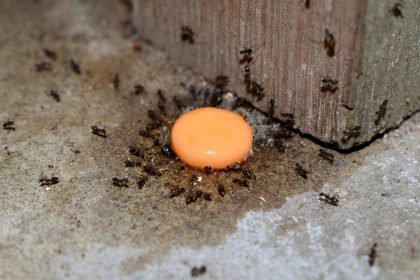Owning a home represents one of life’s most rewarding achievements, but it also demands consistent attention and care. Understanding and mastering these 15 essential tasks helps protect your investment while ensuring a safe, comfortable living environment.
1. Changing air filters regularly
Your HVAC system works tirelessly to maintain comfortable indoor temperatures, but clogged air filters can significantly reduce its efficiency. Regular replacement every 1-3 months ensures proper airflow, reduces energy costs, and maintains healthy indoor air quality. Dirty filters force your system to work harder, increasing energy consumption and potentially shortening equipment life.
2. Cleaning gutters and downspouts
Neglected gutters lead to serious issues including water damage, foundation problems, and pest infestations. Regular maintenance, especially after heavy storms and during fall, prevents debris accumulation and ensures proper water drainage away from your home. This simple task protects your foundation, basement, and exterior walls from water damage.
3. Testing smoke and carbon monoxide detectors
These vital safety devices require monthly testing and annual battery replacement. Units older than 10 years should be upgraded to ensure reliable protection. This small investment in maintenance can make the critical difference in emergency situations, protecting both lives and property.
4. Managing main water supply
Every homeowner must locate and understand their main water shutoff valve operation. Quick access during emergencies prevents devastating water damage from burst pipes or major leaks. Regular testing ensures the valve remains operational when needed.
5. Understanding the electrical panel
Your electrical panel requires proper labeling and familiarity. Understanding circuit breaker locations and functions enables quick response during outages or emergencies. Regular inspection helps identify potential issues before they become serious problems.
6. Maintaining heating and cooling systems
Professional servicing of furnaces, air conditioners, and heat pumps ensures efficient operation and longer system life. Annual tune-ups catch potential problems early, while regular vent cleaning optimizes performance and reduces energy consumption.
7. Addressing plumbing issues
Small plumbing problems can escalate quickly if ignored. Learning to handle minor repairs like fixing leaky faucets or clearing clogged drains saves money and prevents water damage. Keep basic plumbing tools readily available for common issues.
8. Sealing windows and doors
Drafty openings significantly impact energy efficiency. Annual inspection and maintenance of seals, caulking, and weatherstripping reduce heating and cooling costs while improving indoor comfort. This task proves especially important before extreme weather seasons.
9. Monitoring roof condition
Your roof provides critical protection against the elements. Regular inspection for loose shingles, leaks, or moss growth prevents minor issues from becoming major repairs. Seasonal checks help identify potential problems before they cause significant damage.
10. Managing landscape drainage
Proper landscaping prevents water accumulation near your foundation. Maintaining correct soil grading and clearing drainage paths protects your home’s structural integrity. Regular inspection ensures water flows away from your house effectively.
11. Implementing pest control
Regular inspection for pest infestations protects your home’s structure and comfort. Sealing entry points and maintaining cleanliness prevents rodents, termites, and insects from establishing colonies. Early detection saves money and prevents extensive damage.
12. Verifying sump pump operation
Homes with basements rely on functioning sump pumps to prevent flooding. Biannual testing ensures proper operation when needed most. Pour water into the basin to verify appropriate activation and drainage.
13. Evaluating insulation
Proper insulation maintains comfort and reduces energy costs year-round. Regular inspection of attic, wall, and crawl space insulation identifies areas needing attention. Adequate insulation proves essential for energy efficiency.
14. Maintaining emergency tools
A well-stocked toolkit enables quick response to common issues. Essential items include:
- Hammer and screwdrivers
- Pliers and wrenches
- Utility knife
- Measuring tape
- Duct tape
Keep these tools organized and easily accessible for unexpected repairs.
15. Following maintenance schedules
Creating and following a home maintenance calendar prevents task oversight. Divide responsibilities seasonally to manage workload effectively:
Spring tasks:
- HVAC system service
- Gutter cleaning
- Exterior inspection
- Drainage check
Summer tasks:
- Air conditioning maintenance
- Landscape management
- Paint touch-ups
- Window cleaning
Fall preparation:
- Heating system check
- Weatherization
- Gutter cleaning
- Roof inspection
Winter focus:
- Insulation review
- Indoor maintenance
- Emergency preparation
- Planning for spring
Professional partnerships
While many tasks suit DIY approaches, establish relationships with qualified professionals for:
- Major electrical work
- Complex plumbing repairs
- HVAC certification
- Roofing issues
- Foundation concerns
Understanding these essential tasks empowers homeowners to maintain their property effectively while preventing costly repairs. Regular attention to these responsibilities protects your investment and ensures a safe, comfortable living environment for years to come.
This story was created using AI technology.















